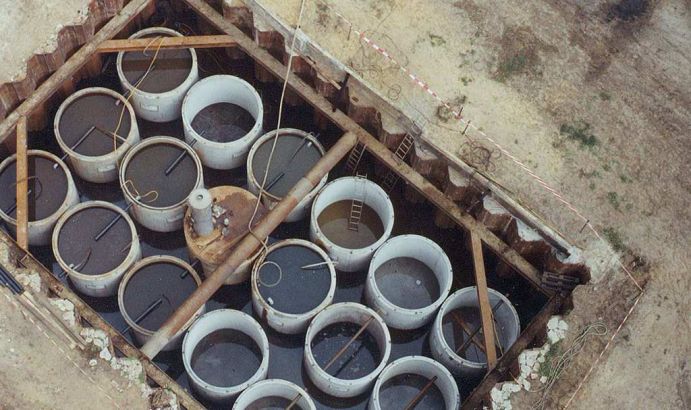Use of Permeable Treatment Walls for Site Remediation (RUBIN)
Aim is to set up generally criteria regarding construction and operation of permeable reactive barriers. The main task comprises to investigate the potentials and limits of application as well as environmental sustainability and economic viability.

Cleaning-up contaminated ground water plays an important role regarding remediation of polluted sites. In comparison to active processes such as pump and treat (P&T), passive in situ remediation technologies have been developed as promising alternatives over recent years. PRBs are designed for treating a plume of pollutants downgradient a source zone of contaminants rather than this zone itself by employing reactive materials. Two design types are predominantly applied: continuous reactive barriers (CRBs) and funnel and gate (F&G) systems. PRBs have originally been developed in North America, where they are meanwhile an established technology. By the RUBIN-Project it could be achieved to connect the international status of the technology as well as advance the technology to a practical feasibility status in Germany.
Results which have been gathered until 2006, taking into account other national as well as international knowledge, were compiled in a PRB guidance document comprising recommendations for planning, construction, operating and decommissioning of PRBs. The document comprises a variety of material and useful information and data regarding PRBs serving the stakeholders as a major information source as well as decision support tool. The PRB guidance document also reveals some deficits of knowledge on PRBs. Therefore, a second phase of RUBIN was initiated to clarify still open issues, that is, regarding differing reactivities of technical zero valent iron (ZVI) brands and especially production batches of the same ZVI brand, correlations of / interrelations among the reactivity of ZVI towards chlorinated volatile organic carbons, gas plugging, precipitations of mineral phases and microbiological activity in ZVI PRBs, and the retardation of heterocyclic aromatic hydrocarbons using activated carbon in PRBs. The results will be covered by a major supplement of the PRB guidance document, thus the large scale R&D program RUBIN will be concluded in 2011.
Last updated on




